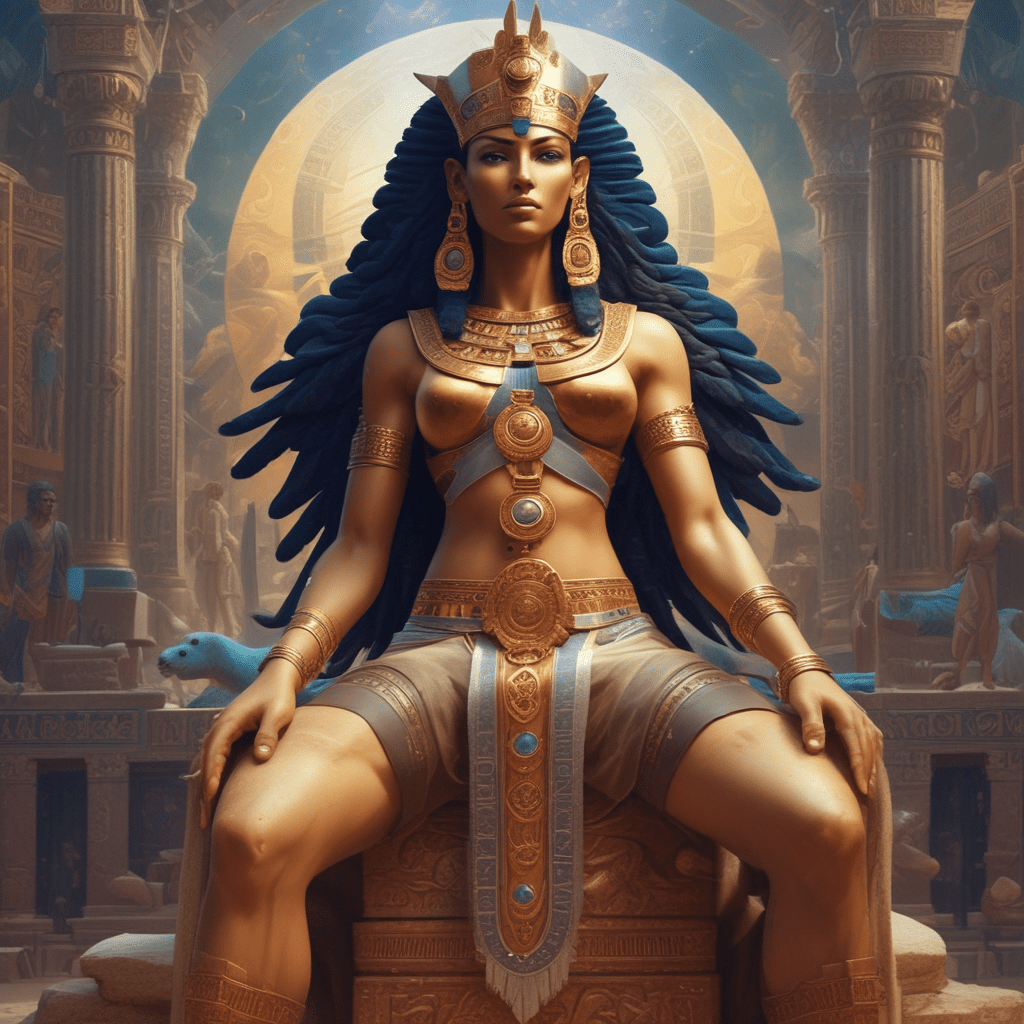The Myth of the God Min in Egyptian Mythology
In Egyptian mythology, Min is a lesser-known deity depicted as a fertility god associated with vegetation, particularly of the eastern desert. Here, we delve into the intriguing myth of Min and his role in ancient Egyptian beliefs.
Who is Min in Egyptian Mythology?
Min is often portrayed as a man with an erect phallus, symbolizing procreation and abundance. As a god of fertility and rain, he was essential for the success of crops and the prosperity of the land. Egyptians revered him as a potent force of creation and renewal.
Symbolism and Importance of Min
Symbolically, the lettuce was Min’s sacred plant, representing growth and rebirth. Linked to the annual flooding of the Nile and the emergence of new life, Min embodied the cyclical nature of existence. He was also associated with masculine virility and pharaonic power.
Min’s Influence in Ancient Egypt
Worshipped primarily in Akhmim, an ancient city in Upper Egypt, Min’s cult spread to other regions over time. His festivals, marked by music, dance, and fertility rites, played a vital role in Egyptian agricultural rituals and the regenerative cycles of nature.
The Legacy of Min Today
While overshadowed by more renowned gods like Ra and Osiris, Min’s symbolism endures in Egyptian art and iconography. His representation as a deity of fertility and abundance continues to captivate scholars and enthusiasts alike, offering a unique insight into ancient beliefs and agricultural practices.
FAQ about the Myth of the God Min in Egyptian Mythology
Who is the Egyptian God Min?
The Egyptian God Min is a deity associated with fertility, harvest, and procreation. Often portrayed as a man with an erect phallus holding a flail, he was revered for his role in ensuring bountiful crops and animal fertility.
What is the significance of God Min in Egyptian mythology?
God Min represented the power of male sexuality and procreation in ancient Egypt. He symbolized the regenerative forces of nature, ensuring the land’s fertility and agricultural abundance, making him a crucial figure in Egyptian agricultural society.
Why was God Min worshipped by the ancient Egyptians?
Ancient Egyptians worshipped God Min to invoke his blessings for agricultural prosperity, abundant harvests, and fruitful livestock. His role in ensuring the land’s fertility made him a vital deity in agrarian communities.
How was God Min depicted in Egyptian art?
In ancient Egyptian art, God Min was often depicted as a man with an erect phallus, wearing a double-feathered crown, and holding a flail. This imagery emphasized his role as a fertility god and symbolized the power of creation and regeneration.
What temples or sacred sites were dedicated to God Min?
Temples dedicated to God Min were primarily located in the city of Akhm





